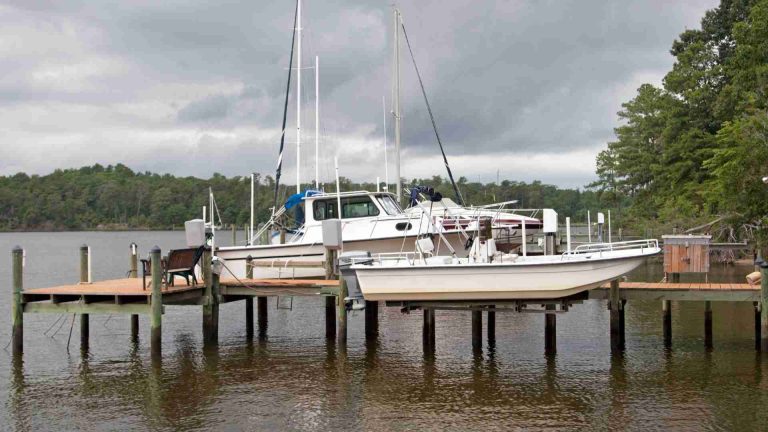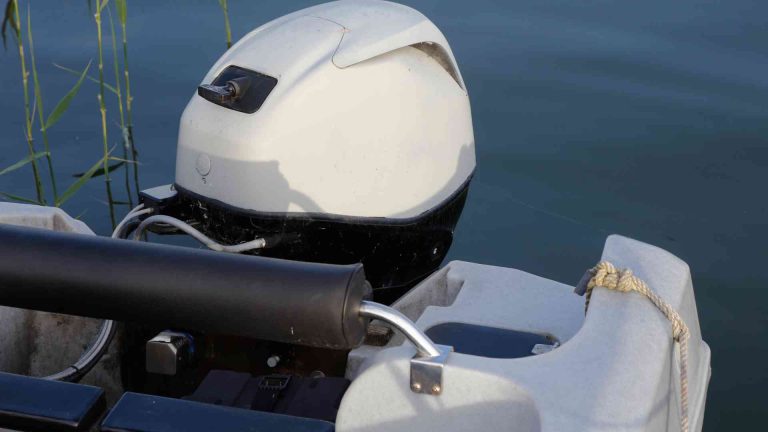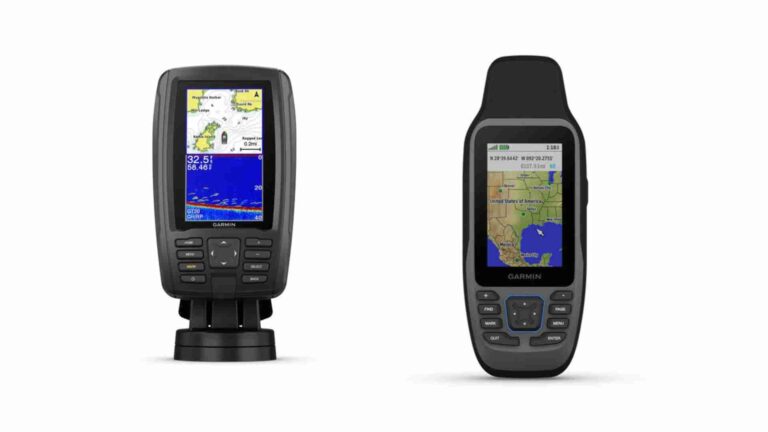Comparing Raymarine Element vs. Axiom: Which is the Better Choice?
Marine electronics have revolutionized boating, offering advanced navigation, fishfinding, and system integration capabilities. Raymarine, a leading brand in the industry, offers two prominent chartplotter series: the Element and the Axiom. Both are designed to enhance your time on the water, but they cater to different needs and budgets. This comprehensive comparison dives into the features, performance, user experience, pricing, and user reviews of the Raymarine Element and Axiom to help you decide which is the better choice for your boating adventures.
Understanding Marine Chartplotters
Chartplotters are essential marine electronics that combine GPS navigation, sonar, and sometimes radar and networking capabilities to provide boaters with real-time information about their surroundings. They help navigate waters, locate fish, and integrate with other onboard systems like autopilots and cameras. Raymarine’s Element and Axiom series are tailored to different boating styles, from casual fishing to complex yacht management.
Introduction to Raymarine Element
The Raymarine Element series is designed as a standalone, budget-friendly chartplotter and fishfinder combo, primarily targeting anglers and recreational boaters. It emphasizes advanced sonar technology and ease of use, making it ideal for those who need a reliable, straightforward system without the complexity of extensive networking.
Key features include:
- HyperVision Sonar: A 1.2 MHz sonar offering high-resolution imaging for inland and coastal fishing.
- LightHouse Sport OS: A simplified operating system optimized for quick navigation and sonar operation.
- Keypad Control: A button-based interface, ideal for wet or rough conditions where touchscreens may be less reliable.
- Standalone Design: Limited networking, focusing on core navigation and fishfinding tasks.
The Element is available in 7″, 9″, and 12″ display sizes, catering to various boat sizes and user preferences.
Introduction to Raymarine Axiom
The Raymarine Axiom series represents the pinnacle of Raymarine’s chartplotter technology, offering a fully networked, multifunctional display (MFD) for boaters who demand advanced integration and performance. It’s designed for larger vessels or those requiring comprehensive boat management systems.
Key features include:
- RealVision 3D Sonar: A 4-channel sonar system providing detailed 3D underwater imaging.
- LightHouse 3 OS: A robust, customizable operating system supporting extensive app integration and system networking.
- Touchscreen Control: A responsive, high-resolution touchscreen for intuitive operation.
- Networking Capabilities: Seamless integration with radar, thermal cameras, autopilots, and other NMEA2000/SeaTalkng devices.
The Axiom is available in 7″, 9″, and 12″ models, with options like the Axiom+ and Axiom Pro for enhanced performance.
Raymarine Element vs. Axiom: Key Differences at a Glance
| Feature | Raymarine Axiom | Raymarine Element |
|---|---|---|
| Control Type | Touchscreen | Keypad |
| Operating System | LightHouse 3 | LightHouse Sport |
| Brightness | 1200 nits | 1500 nits |
| Display Type | WXGA IPS | WXGA LCD |
| Power Consumption | 10W | 15W |
| Viewing Angle | 88° | 89° |
| Networking | Yes (Radar, Autopilot, Cameras, etc.) | Standalone (Limited NMEA 2000) |
| Weight | 6.25 lbs | 6.50 lbs |
| Memory | 4GB | 8GB |
| Waypoints | 10,000 | 5,000 |
| Routes | 150 | 50 |
| Radar Compatibility | Multiple options (Quantum, HD, etc.) | Quantum WiFi Only |
| Thermal Camera Support | Yes | No |
| Video Inputs | Up to 10 | No |
| Gyro-Stabilized Imaging | Yes | No |
| Sonar Technology | RealVision 3D | HyperVision (1.2MHz) |
| Price Range | 849 – 3,099$ | 549 – 2,300$ |
Detailed Comparison: Axiom vs. Element
To understand which chartplotter suits your needs, let’s compare the core features of the Element and Axiom across critical aspects.
Display and Interface
Raymarine Element:
- Display: WXGA LCD with 1500 nits brightness, ensuring visibility in bright sunlight.
- Resolution: 1280×800 pixels across all models.
- Interface: Keypad-only control, designed for reliability in wet or rough conditions. The buttons lack backlighting, which some users find limiting at night.
- Viewing Angle: 89°, offering good visibility from various positions.
Raymarine Axiom:
- Display: WXGA IPS with 1200 nits brightness, slightly less bright but with better color accuracy and contrast.
- Resolution: 1280×800 pixels, matching the Element.
- Interface: Touchscreen-only (except Axiom Pro, which offers hybrid touch/knob control). A remote keypad can be added for non-touch operation.
- Viewing Angle: 88°, comparable to the Element.
Analysis:
The Axiom’s touchscreen offers a more modern, smartphone-like experience, but the Element’s keypad is preferred by users in challenging conditions. The lack of button backlighting on the Element is a notable drawback, as highlighted by user mainsail1 on a boating forum, who returned their unit due to nighttime usability issues. However, KREW2 countered that the screen’s glow provides sufficient light for operation.
Sonar Technology
Sonar is a critical feature for anglers, and both series excel but in different ways.
Raymarine Element:
- HyperVision Sonar: Operates at 1.2 MHz, providing superior detail for shallow-water fishing (up to 100 feet). It includes:
- High CHIRP Sonar
- DownVision (Standard/Hyper)
- SideVision (Standard/Hyper)
- RealVision 3D (Standard/Hyper)
- Performance: HyperVision delivers crystal-clear images, ideal for locating structure and fish in coastal or inland waters. User Chief Brody praised its high-resolution imaging for inshore fishing.
Raymarine Axiom:
- RealVision 3D Sonar: A 4-channel system operating at 350 kHz, including:
- High CHIRP Sonar
- DownVision
- SideVision
- RealVision 3D
- Performance: Offers gyro-stabilized imaging for smoother visuals in rough conditions. It’s better suited for deeper waters and offshore fishing, with a range up to 600 feet per side for SideVision.
Analysis:
The Element’s HyperVision provides unmatched detail in shallow waters, making it the go-to choice for anglers like grey2112, who spearfish in less than 100 feet of water. The Axiom’s RealVision 3D is more versatile for varied depths and benefits from gyro-stabilization, which the Element lacks, as noted by pdxfisher on a fishing forum.
Chartplotting and Navigation
Both series offer robust chartplotting, but their capabilities differ.
Raymarine Element:
- Charts: Supports Navionics, C-MAP, and LightHouse NC2 charts with Fishing Hot Spots.
- Waypoints/Routes: Up to 5,000 waypoints and 50 routes.
- Features: Custom mapping and fast chart redraws via a quad-core processor. Limited to basic navigation functions.
Raymarine Axiom:
- Charts: Compatible with advanced charting options, including raster, vector, and 3D charts.
- Waypoints/Routes: Up to 10,000 waypoints and 150 routes.
- Features: Augmented reality overlays, tack lay lines (with water speed input), and integration with AIS, radar, and autopilot systems. User ashtead emphasized the value of AIS integration for channel crossings.
Analysis:
The Axiom’s advanced navigation features and networking make it ideal for complex voyages, while the Element’s simpler system suits coastal or inland navigation. Tranona recommended assessing integration needs before choosing, as the Axiom’s capabilities may be overkill for basic setups.
Networking and Integration
Raymarine Element:
- Standalone Design: Limited NMEA2000 networking for VHF and engine data. No support for thermal cameras, video inputs, or extensive radar options (only Quantum WiFi radar).
- Use Case: Best for small boats or kayaks, as noted by Hickory Legend, where networking isn’t required.
Raymarine Axiom:
- Networkable: Supports up to 10 video inputs, thermal cameras, multiple radar options, and NMEA0183 (with adapter). Can control DJI Mavic drones and integrate with autopilots and instruments.
- Use Case: Suited for larger vessels or networked systems, as Greg2 described using dual Axioms with radar and AIS on their boat.
Analysis:
The Axiom’s networking capabilities are a significant advantage for boaters like RunAgroundHard, who networked their Axiom with ST60 instruments and an Evo autopilot. The Element’s standalone nature limits its scalability but simplifies installation and use.
*Requires adapter for NMEA0183.
Performance Analysis
Speed and Accuracy
Raymarine Element:
Powered by a quad-core processor, the Element offers instantaneous chart redraws and smooth sonar rendering, even with all sonar channels active. Its GPS supports GLONASS and Galileo for accurate positioning, praised by Red Green for reliability on a 20′ center console.
Raymarine Axiom:
Also equipped with a multi-core processor, the Axiom handles complex tasks like augmented reality and networking without lag. Its gyro-stabilized sonar enhances image stability, as noted by pdxfisher, who inquired about its impact on image quality.
Analysis:
Both systems deliver fast, accurate performance, but the Axiom’s advanced processing and stabilization give it an edge in demanding conditions.
Durability and Weather Resistance
Raymarine Element:
Features a rugged, waterproof (IPX6/IPX7) housing resistant to saltwater corrosion. Its optically bonded display reduces glare and condensation.
Raymarine Axiom:
Similarly waterproof (IPX6/IPX7) with a reinforced frame and anti-glare coating. Its HydroTough screen, as mentioned by Daybreaker1, enhances durability.
Analysis:
Both are built for marine environments, with the Axiom’s HydroTough screen offering a slight edge in ruggedness.
Ease of Use and Installation
User Interface
Raymarine Element:
The LightHouse Sport OS is intuitive, with a button-driven interface that’s easy to learn. However, the lack of touchscreen and limited app support can feel restrictive, as mattsteg noted a desire for LightHouse 3 on the Element.
Raymarine Axiom:
The LightHouse 3 OS is highly customizable, with a touchscreen interface that westhinder described as a “serious leap in user-friendliness” compared to older Raymarine plotters. The optional remote keypad addresses touchscreen concerns in wet conditions, as SaltyC appreciated.
Analysis:
The Axiom’s interface is more versatile, but the Element’s simplicity suits users who prefer straightforward operation.
Installation
Raymarine Element:
Its standalone design simplifies installation, requiring only power, transducer, and optional NMEA2000 connections. Citimarine Store emphasized its ease of setup for small boats.
Raymarine Axiom:
Installation is more complex due to networking options but is streamlined with clear instructions and modular connectors. RunAgroundHard found the Axiom’s networking setup straightforward with existing Raymarine instruments.
Analysis:
The Element is easier to install for basic setups, while the Axiom’s flexibility suits integrated systems.
Pricing and Value for Money
Raymarine Element Pricing
- Element 7 HV: $549–$749
- Element 9 HV: $849–$1,049
- Element 12 HV: $1,750–$2,300
The Element offers exceptional value for anglers and casual boaters, as KREW2 highlighted a deal at $395 for an Element 7 with charts. Its advanced sonar at a lower price point makes it a strong competitor to Garmin and Humminbird units, as pdxfisher noted.
Raymarine Axiom Pricing
- Axiom 7: $849–$1,249
- Axiom 9: $999–$1,599
- Axiom 12: $2,449–$3,099
The Axiom’s higher cost reflects its networking and advanced features. Greg2 justified the investment for its seamless integration with radar and AIS, while grey2112 questioned if the $650 premium over the Element 9 was worth it for spearfishing.
Analysis:
The Element is the better value for budget-conscious boaters or those needing only sonar and navigation. The Axiom’s price is justified for complex setups requiring networking and advanced features.
User Reviews and Feedback
Raymarine Element Reviews
- Positive: Red Green praised the Element’s performance on a small boat, noting its sufficiency for basic needs. Chief Brody highlighted HyperVision’s clarity, sharing images that impressed forum users.
- Negative: mainsail1 criticized the lack of keypad backlighting, making nighttime use challenging. Dean was disappointed by the inability to mirror the screen to a tablet, limiting its flexibility.
Raymarine Axiom Reviews
- Positive: Greg2 lauded the Axiom’s networking and touchscreen, using it effectively with a remote keypad. RunAgroundHard appreciated its reliability and integration with older Raymarine instruments.
- Negative: SaltyC noted the touchscreen-only design’s potential issues in wet conditions, mitigated by the remote keypad. grey2112 questioned its value for standalone use, given the higher cost.
Analysis: The Element is favored for its affordability and sonar prowess, while the Axiom shines in networked setups but may be overkill for simple applications.
Best Settings for a WordPress Recipe Website (Not Applicable)
This section was requested but is irrelevant to chartplotters, as they don’t relate to WordPress websites. If you meant a marine electronics-related website, consider these tips for showcasing Element or Axiom:
- Plugins: Use WooCommerce for product listings and Yoast SEO for optimization.
- Themes: Choose a responsive theme like Astra for clear display of specs and reviews.
- Content: Include comparison tables, user reviews, and sonar images to engage visitors.
Recommendation: Which is the Better Choice?
Choose Raymarine Element If:
- You’re an angler or casual boater needing a standalone chartplotter with advanced sonar.
- Your budget is limited, and you don’t require networking or complex integration.
- You prefer keypad control for reliability in rough conditions.
- Ideal Use Case: Small boats, kayaks, or inland/coastal fishing, as pdxfisher used on a kayak.
Choose Raymarine Axiom If:
- You need a fully networked MFD for radar, cameras, autopilots, and other systems.
- You value touchscreen control and advanced navigation features like augmented reality.
- You operate a larger vessel or require offshore capabilities.
- Ideal Use Case: Yachts or networked systems, as Greg2 implemented on a flybridge boat.
Final Verdict
The Raymarine Element is the better choice for budget-conscious anglers prioritizing sonar performance and simplicity. Its HyperVision sonar and affordability make it a standout for small boats and shallow-water fishing. Conversely, the Raymarine Axiom is the superior option for boaters seeking a comprehensive, networked chartplotter with advanced features and scalability. Its versatility and integration capabilities justify the higher cost for complex setups.
Ultimately, your choice depends on your boating needs, budget, and whether you prioritize standalone simplicity or networked functionality. Both systems reflect Raymarine’s commitment to quality, ensuring a reliable and feature-rich experience on the water.
Happy Boating!
Share Comparing Raymarine Element vs. Axiom: Which is the Better Choice? with your friends and leave a comment below with your thoughts.
Read Boat Logo Wallpaper 4K HD Images until we meet in the next article.






